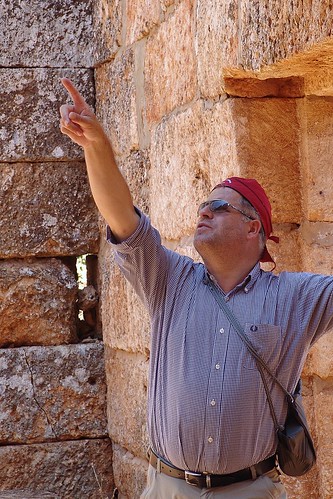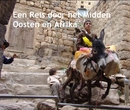The Dead Cities

There are about 600 of them in this part of Syria. Old towns and cities dating back from late Roman/early Byzantine days. They were never really invaded and destroyed. More abandoned and left to the wills of the weather and earthquakes. They can be found in the countryside in between modern villages or right in the middle, with some of the buildings being used as dwellings for the local folk and their animals - goats, sheep and horses, as you can tell from the photos.
Amazingly, many of the buildings stand almost as they were abandoned, two to three stories high, gaps for doors and windows, and inscriptions still in place. Of course, all the mosaics have been removed, many to a local museum, which just happened to be closed today (much like the barbers yesterday - just as we were both so much looking forward to a shave). So, it was very much like coming face-to-face with the towns as they were 1,500 years ago.
It happened to be much hotter today and there were many Dead Cities to be visited, so needless to say we suffered a bit from fatigue, and Fred's insides are playing up a bit. Anyway, the final stop was at Ebla, a city from the Bronze Age, 4.000 years old, which has been excavated and skillfully restored by a group from University "La Sapienza" in Rome. They produced some very good descriptions in Arabic, Italian and English, the first time we have come across any explanations to any of the sites since we have been here.
Tomorrow, we go either to the Raqqa, on the Euphrates, in the desert to the east of here or we go south to Hama on the Orontes River, with its big water wheels. If it is the desert you will nto here from us for a while.
Labels: Syria, Trip to Middle East and Africa




0 Comments:
Post a Comment
<< Home